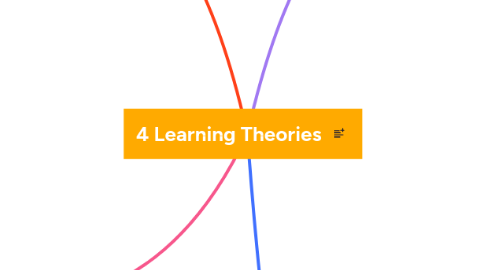
1. Montessori Education prepares
1.1. Teachers to
1.1.1. Create a structured, well-organized classroom where materials are easily accessible to students, encouraging self-directed learning.
1.1.2. Act as facilitators, guiding students through their learning journey rather than delivering direct instruction.
1.1.3. Recognize each child's unique pace and interest, allowing for individual progression.
1.2. Schools to
1.2.1. Design classrooms that are child-centered, with furniture and materials appropriate for children's size and developmental needs.
1.2.2. Foster strong parent-school partnerships, educating parents on Montessori methods and principles.
1.2.3. Go beyond academics to prioritize social, emotional, physical, and moral development.
1.3. Students to
1.3.1. Engage in activities based on their interests and pace, fostering independence.
1.3.2. Use specially designed Montessori materials to explore concepts concretely before understanding them abstractly.
1.3.3. Engage in "practical life" activities, like cleaning or cooking, to develop coordination, focus, and independence.
1.4. Instructional Designer to
1.4.1. Design learning experiences that move from simple to complex and concrete to abstract.
1.4.2. Integrate subjects, emphasizing connections between different areas of learning.
1.4.3. Design flexible learning pathways that can be adapted based on individual students' needs and interests.
2. Cognitivism prepares
2.1. Teachers to
2.1.1. Facilitate active, experiential learning environments.
2.1.2. Encourage students to question and explore.
2.1.3. Integrate real-world, authentic tasks into lessons.
2.2. Schools to
2.2.1. Create flexible learning spaces that promote exploration.
2.2.2. Encourage collaborative and project-based learning.
2.2.3. Emphasize the importance of context in learning.
2.3. Students to
2.3.1. Actively engage with and construct their knowledge.
2.3.2. Relate new information to personal experiences.
2.3.3. Be self-directed and explore areas of interest.
2.4. Instructional Designer to
2.4.1. Design content that taps into learners' prior knowledge.
2.4.2. Utilize cognitive strategies, like problem-solving scenarios or case studies.
2.4.3. Implement tools and strategies (like mind maps) to help learners visualize and organize knowledge.
3. Behaviorism prepares
3.1. Teachers to
3.1.1. Implement structured reward and punishment systems.
3.1.2. Design lessons based on stimulus-response associations.
3.1.3. Use repeated practice and reinforcement to ensure retention.
3.2. Schools to
3.2.1. Create structured environments emphasizing rewards and sanctions.
3.2.2. Design curriculum with clear, observable outcomes.
3.2.3. Implement behavior management strategies.
3.3. Students to
3.3.1. Understand the consequences of their behaviors.
3.3.2. Respond to specific stimuli with conditioned behaviors.
3.3.3. Practice behaviors to achieve desired outcomes.
3.4. Instructional Designer to
3.4.1. Develop clear, measurable objectives for training or educational modules.
3.4.2. Incorporate consistent feedback mechanisms (like quizzes) to reinforce learning.
3.4.3. Design structured environments with clear consequences (badges, points, etc.).
4. Constructivism prepares
4.1. Teachers to
4.1.1. Recognize the importance of prior knowledge.
4.1.2. Structure information to aid memory and comprehension.
4.1.3. Use strategies to enhance information encoding and retrieval.
4.2. Schools to
4.2.1. Invest in training on cognitive strategies.
4.2.2. Design curricula that align with cognitive development stages.
4.2.3. Implement assessments that test deeper cognitive skills.
4.3. Students to
4.3.1. Be aware of their cognitive processes.
4.3.2. Use mnemonic devices and other memory aids.
4.3.3. Connect new knowledge with existing schemas.
4.4. Instructional Designer to
4.4.1. Develop learning experiences that allow learners to construct their own knowledge, such as simulations or real-world tasks.
4.4.2. Create collaborative learning opportunities, like group projects or discussions.
4.4.3. Incorporate multiple perspectives and resources, allowing learners to explore and construct their understanding.
